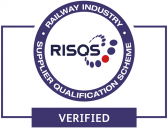What we think, do and admire…
This is where we share our thoughts on everything that’s interesting at Kilfrost.
The Importance of Cleaning Your Ground Source Heat Pump System Before Adding Heat Transfer Fluids
By Kilfrost
October 22nd, 2024
Share this story

If you’re running or installing a Ground Source Heat Pump (GSHP), getting your system ready before adding any heat transfer fluid (HTF) is key. Whether your system is brand new or has been in service for a while, contaminants like lubricants, welding debris, scale, sludge, and even bacteria can accumulate. These can trigger corrosion, cause biofouling, and lead to some serious performance issues. Taking the time to clean your system properly from the start can make a big difference in how well it runs and how long it lasts.
Why Cleaning Matters
Skipping the cleaning step is tempting, especially if you’re on a tight deadline, but it can lead to problems down the line causing more system downtime and increased costs. New systems often come with residues from manufacturing, like leftover chemicals, oils, and bits of metal from welding. If those contaminants get into your HTF, they can start to corrode and clog up the system. Older systems can also tend to build up a mix of scale, sludge, and microbiological growth over time. If you skip cleaning and jump straight to adding fluid, you are taking a risk for early wear and tear.
How to Clean Your GSHP System Properly
It might sound like a lot, but cleaning your system the right way isn’t as complicated as it seems. Here’s a quick breakdown:
Drain your system: get rid of all the old fluid and any leftover contaminants in the system. This will clear the way for proper cleaning.
Pick the right cleaning solution: the cleaner you choose should match the type of fouling in your system. Be mindful of the concentration and give it enough time to circulate and break down the gunk.
Flush and rinse thoroughly: after the cleaning solution has done its job, make sure you drain it all out. Then rinse the system thoroughly with clean water to wash away any remaining residue. You want to start with a squeaky-clean slate.
Sanitise to eliminate bacteria: introduce a sanitising agent to kill any leftover microorganisms. Once that’s done, drain and rinse one last time to make sure the system is totally clean and ready for fresh fluid.
Kilfrost’s Three-Month Fluid Checks
Even after all that preparation, keeping an eye on your system is essential. At Kilfrost, we recommend a first fluid check at the three-month mark, then annual checks after that. You might be wondering why so soon. From our experience, a lot of common issues arise from systems not being cleaned thoroughly before adding the HTF. Leftover debris, poor sanitisation, or contaminants can lead to rapid corrosion, fluid degradation, and poor system performance.
Common Pitfalls and Proactive Care
It's easy to overlook the importance of pre-treatment. Some might assume that adding HTF to a “clean enough” system will do the trick. But the most common pitfalls include not using the correct cleaning solution, poor flushing of cleaning agents, and neglecting to check for microbiological growth. Each of these can drastically shorten the lifespan of both the fluid and the system.
Cleaning a GSHP system properly and performing regular fluid checks helps you catch potential problems before they escalate. When your fluid is clean and balanced, your system will run more efficiently, saving you time and money in the long run. A little proactive care goes a long way toward protecting your investment in the system and also in allowing the fluid to do the job for which it was designed.
Getting the Most Out of Your System
Regular fluid checks may sound like an extra chore, but they're essential for maximising your system's performance and longevity. A clean system allows the HTF to work effectively, providing proper heat transfer and protection against corrosion. It’s all about ensuring that your GSHP is running at peak efficiency and giving you the best possible return on your investment.
So, whether you’re setting up a new GSHP or giving an older one a refresh, don’t skip out on a thorough cleaning. With the right prep, regular fluid monitoring, and proper care, your system will stay efficient and reliable for years to come.


